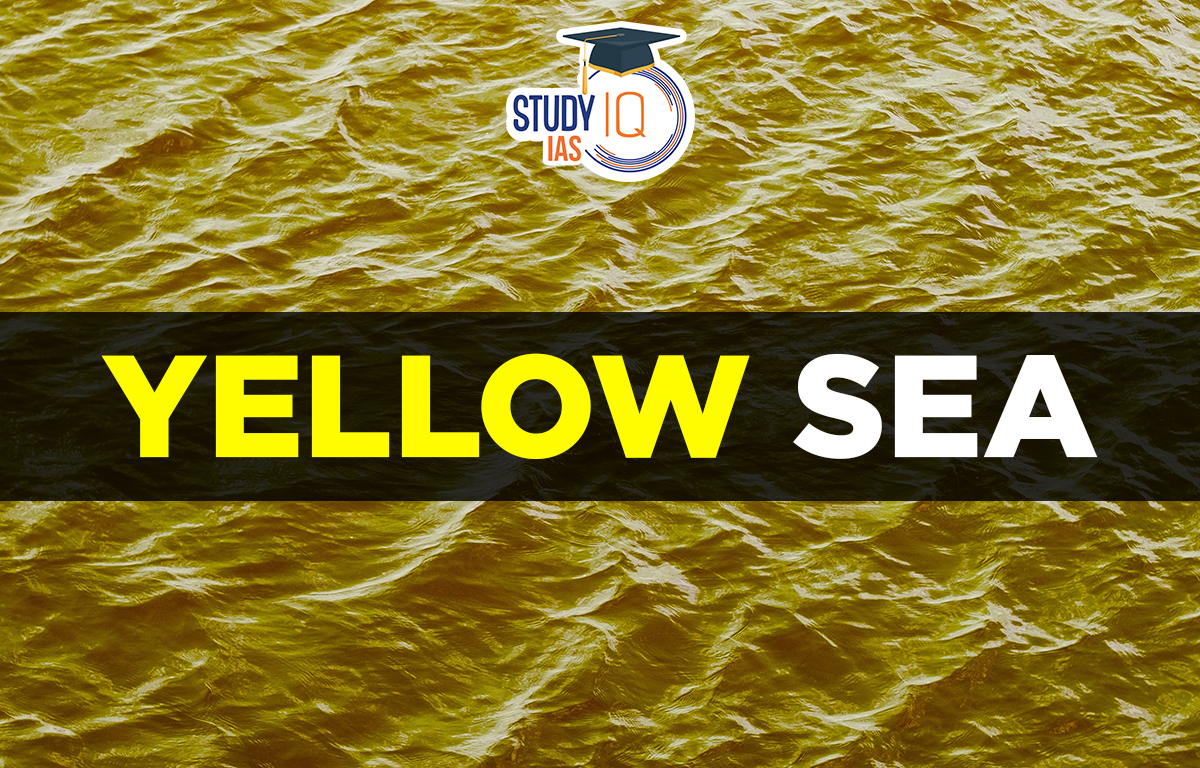Table of Contents
Yellow Sea
The Yellow Sea, which is part of the northeastern portion of the East China Sea is a marginal sea of the Western Pacific Ocean situated between mainland China and the Korean Peninsula. The golden-yellow color of the water released from the main rivers gives rise to its name.
The Yellow Sea or Huang Hai is a large inlet of the western North Pacific Ocean located between northeastern China and the Korean Peninsula. Known for its rich fishing grounds it connects to the East China Sea to the south. This Peninsula extends into the sea from the west and its two main arms are Bo Hai (to the northwest) and Korea Bay (to the north). Excluding Bo Hai, the Yellow Sea covers about 380000 square kilometers and has a maximum depth of about 152 meters. It gets its name from the yellow silt carried into it by major rivers like the Huang He (Yellow River) and the Yangtze. Important ports in the area include Qingdao and Dalian in China, Inch’ŏn in South Korea, and Namp’o in North Korea.
Read More: Adriatic Sea
Yellow Sea Map
To the north of the East China Sea is the Yellow Sea. The Yellow Sea is a shallow sea divided into the northern Yellow Sea and the southern Yellow Sea. It is located between China and Korea and is bordered by Hebei, Shandong, Liaoning, and Jiangsu Provinces. Major rivers that flow into the Yellow Sea include the Hai, Yalu, Han, Taedong, and Yellow Rivers. The sea also has several islands, such as Anmado, Yeonpyeongdo, Baengnyeongdo, Daebudo, Gageodo, Hauido, Hongdo, Jindo, Sido, and Wando.
Read More: Arabian Sea
Yellow Sea Geography
The Yellow Sea is a large inlet of the western Pacific Ocean, located between the Korean Peninsula to the east and mainland China to the west. It connects to the East China Sea to the north, following a line from the Yangtze River mouth to Cheju Island in South Korea. The sea is about 960 km long from north to south and around 700 km wide from east to west. The Bo Hai is to the northwest of the Yellow Sea, lying between the Shandong Peninsula to the south and the Liaodong Peninsula to the north. The Yellow Sea covers about 380,000 square kilometers, with an average depth of 44 meters and a maximum depth of about 152 meters.
Read More: Caribbean Sea
Yellow Sea Bordering Countries
The main Chinese rivers that flow into the Yellow Sea carry dirt which is why the sea is called “Yellow.” It is a large inlet of the western Pacific Ocean, located between the Korean Peninsula to the east and mainland China to the west and north. To the north of the East China Sea is the Yellow Sea. Its northern and western borders are with Mainland China, while its eastern border is shared by North and South Korea. There are three countries that border the Yellow Sea– China, North Korea, and South Korea.
Read More: Sea of Azov
Yellow Sea Physical Features
- The Yellow Sea is a flat, shallow area, including the Bo Hai and Korea Bay, with a basin shape that is about 60 to 80 meter deep.
- Its floor is a distinct part of the continental shelf that was underwater after the last ice age, about 10000 years ago.
- The seafloor gently slopes down from the Chinese mainland but drops more steeply from the Korean peninsula into a valley-like shape.
- This valley follows the path of the Huang He (Yellow River), which carried sediments into the Okinawa Trough during low sea levels.
- Major rivers like the Yangtze and Huang He contribute a lot of muddy and silty sediments to the sea, giving it its name.
- Since the last glacial period, these rivers have added layers of silty and muddy sediments on top of the sandy base, marking a boundary between Chinese silt and Korean sand.
Read More: Sea of Japan
Yellow Sea Climate
The weather has very cold, dry winters and warm, wet summers. It has a moderate monsoon climate. From late November to early March, a strong northern monsoon often brings heavy snowstorms to the Bo Hai region. In addition to occasional storms in the winter, typhoons can also happen in the summer. With precipitation varying from roughly 50 cm in the north to 100 cm in the south, air temperatures range from 50 to 82 °F (10 to 28 °C). Along the coasts, sea fog is common, especially where cold water is upwelling.
Read More: South China Sea
Yellow Sea Fishing
Like the East China Sea, the Yellow Sea is well known for its fishing areas. Chinese, Korean, and Japanese fishing boats have been catching a lot of bottom-dwelling fish for years. While the overall catch has gone up, Japan’s catch has decreased, but catches from China and South Korea have increased. The main fish caught include sea bream, croakers, lizard fish, prawns, cutlass fish, horse mackerel, squids, and flounders.. All of these species, however, are overfished, and the capture of some species that are particularly valued has decreased.
The parts of the Yellow Sea in China and North Korea have been successful in finding oil. The sea has also become more important because trade between nearby countries has grown. The main ports in China are Dalian, Tianjin, Qingdao, and Qinhuangdao. In South Korea, the main port is Incheon, which helps serve Seoul. In North Korea, the main port is Nampo, which serves Pyongyang.
Read More: Atlantic Ocean
Yellow Sea UPSC
The Yellow Sea’s rivers transport so much mineral-rich soil that it really colours the water yellow. The Yellow Sea is also distinctive in that it is a somewhat semi-enclosed body of water with its normal depths being only 60-80m, with China to the west and North and South Korea to the east.


 Role of Teachers in Educations, Student ...
Role of Teachers in Educations, Student ...
 India's achievements after 75 years of I...
India's achievements after 75 years of I...
 Bal Gangadhar Tilak Biography, Achieveme...
Bal Gangadhar Tilak Biography, Achieveme...

























